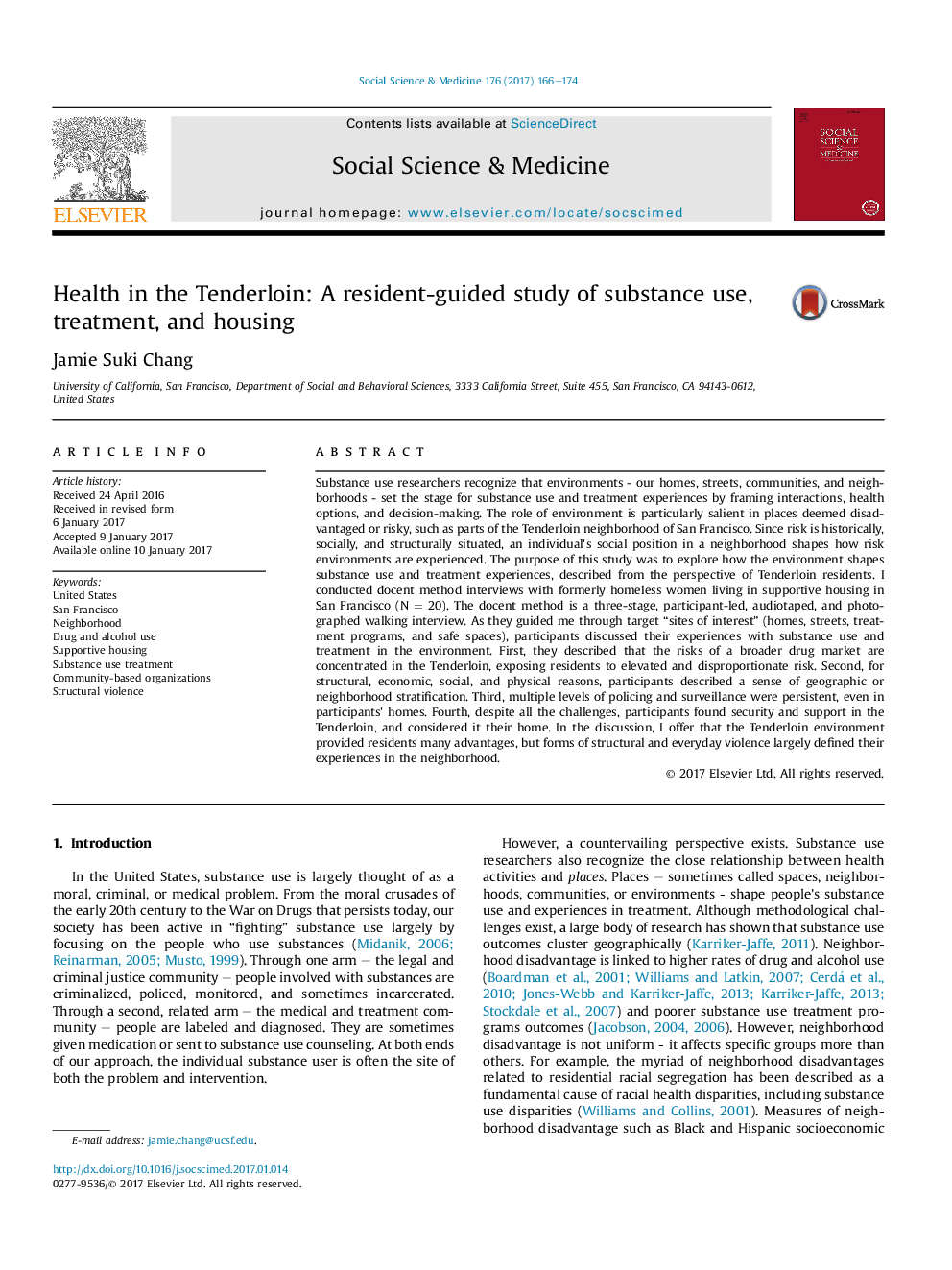| کد مقاله | کد نشریه | سال انتشار | مقاله انگلیسی | نسخه تمام متن |
|---|---|---|---|---|
| 5046756 | 1475993 | 2017 | 9 صفحه PDF | دانلود رایگان |
- Using the docent method, participants guided walking interviews in the Tenderloin.
- Structural and everyday violence are defining factors in the environment.
- The risks as well as potential advantages of environments should be considered.
Substance use researchers recognize that environments - our homes, streets, communities, and neighborhoods - set the stage for substance use and treatment experiences by framing interactions, health options, and decision-making. The role of environment is particularly salient in places deemed disadvantaged or risky, such as parts of the Tenderloin neighborhood of San Francisco. Since risk is historically, socially, and structurally situated, an individual's social position in a neighborhood shapes how risk environments are experienced. The purpose of this study was to explore how the environment shapes substance use and treatment experiences, described from the perspective of Tenderloin residents. I conducted docent method interviews with formerly homeless women living in supportive housing in San Francisco (NÂ =Â 20). The docent method is a three-stage, participant-led, audiotaped, and photographed walking interview. As they guided me through target “sites of interest” (homes, streets, treatment programs, and safe spaces), participants discussed their experiences with substance use and treatment in the environment. First, they described that the risks of a broader drug market are concentrated in the Tenderloin, exposing residents to elevated and disproportionate risk. Second, for structural, economic, social, and physical reasons, participants described a sense of geographic or neighborhood stratification. Third, multiple levels of policing and surveillance were persistent, even in participants' homes. Fourth, despite all the challenges, participants found security and support in the Tenderloin, and considered it their home. In the discussion, I offer that the Tenderloin environment provided residents many advantages, but forms of structural and everyday violence largely defined their experiences in the neighborhood.
Journal: Social Science & Medicine - Volume 176, March 2017, Pages 166-174
